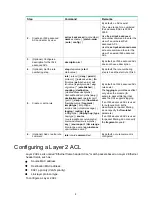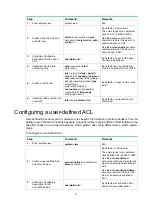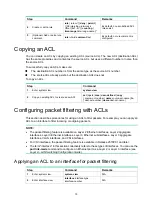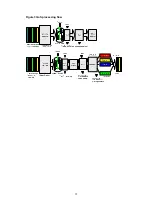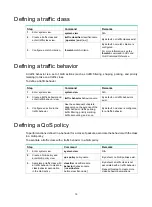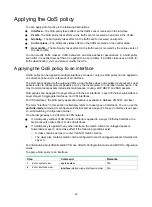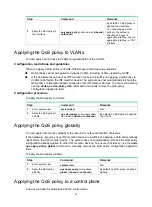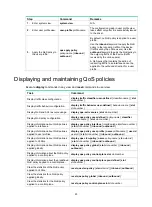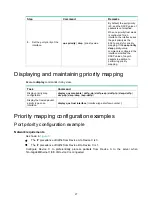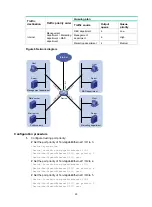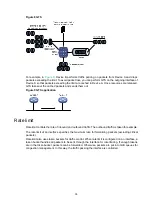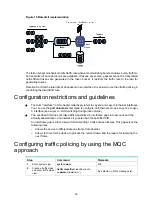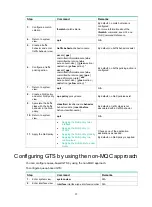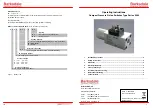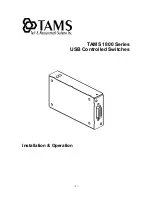
22
•
Data
plane
—The units at the data plane are responsible for receiving, transmitting, and
switching (forwarding) packets, such as various dedicated forwarding chips. They deliver super
processing speeds and throughput.
•
Control
plane
—The units at the control plane are processing units running most routing and
switching protocols. They are responsible for protocol packet resolution and calculation, such
as CPUs. Compared with data plane units, the control plane units allow for great packet
processing flexibility but have lower throughput.
When the data plane receives packets that it cannot recognize or process, it transmits them to the
control plane. If the transmission rate exceeds the processing capability of the control plane, the
control plane will be busy handling undesired packets. As a result, the control plane will fail to handle
legitimate packets correctly or timely. As a result, protocol performance is affected.
To address this problem, apply a QoS policy to the control plane to take QoS actions, such as traffic
filtering or rate limiting, on inbound traffic. This ensures that the control plane can correctly receive,
transmit, and process packets.
A predefined control plane QoS policy uses the protocol type or protocol group type to identify the
type of packets sent to the control plane. You can use protocol types or protocol group types in
if-match
commands in traffic class view for traffic classification. Then you can reconfigure traffic
behaviors for these traffic classes as required. You can use the
display qos policy control-plane
pre-defined
command to display predefined control plane QoS policies.
Configuration restrictions and guidelines
When you apply a QoS policy to a control plane, follow these restrictions and guidelines:
•
If the hardware resources of IRF member device are insufficient, applying a QoS policy globally
might fail on the IRF member device. The system does not automatically roll back the QoS
policy configuration already applied to other IRF member devices. To ensure consistency, use
the
undo qos apply policy
command to manually remove the QoS policy configuration applied
to them.
•
If a class uses control plane protocols or control plane protocol groups as match criteria, the
action in the associated traffic behavior can only be
car
or the combination of
car
and
accounting packet
. Only the
cir
keyword in the
car
action can be applied correctly.
Configuration procedure
To apply the QoS policy to a control plane:
Step Command
Remarks
1.
Enter system view.
system-view
N/A
2.
Enter control plane view.
control-plane
slot
slot-number
N/A
3.
Apply the QoS policy to the
control plane.
qos apply policy
policy-name
inbound
By default, no QoS policy
is applied to a control
plane.
Applying the QoS policy to a user profile
You can apply a QoS policy to multiple user profiles. In one direction of each user profile, only one
policy can be applied. To modify a QoS policy already applied to a direction, first remove the applied
QoS policy.
A user profile supports 802.1X authentication and MAC authentication.
To apply a QoS policy to a user profile:
Summary of Contents for FlexFabric 5940 Series
Page 23: ...17 Figure 3 QoS processing flow ...
Page 84: ...78 Figure 26 MPLS label structure ...
Page 91: ...85 Switch burst mode enable ...

